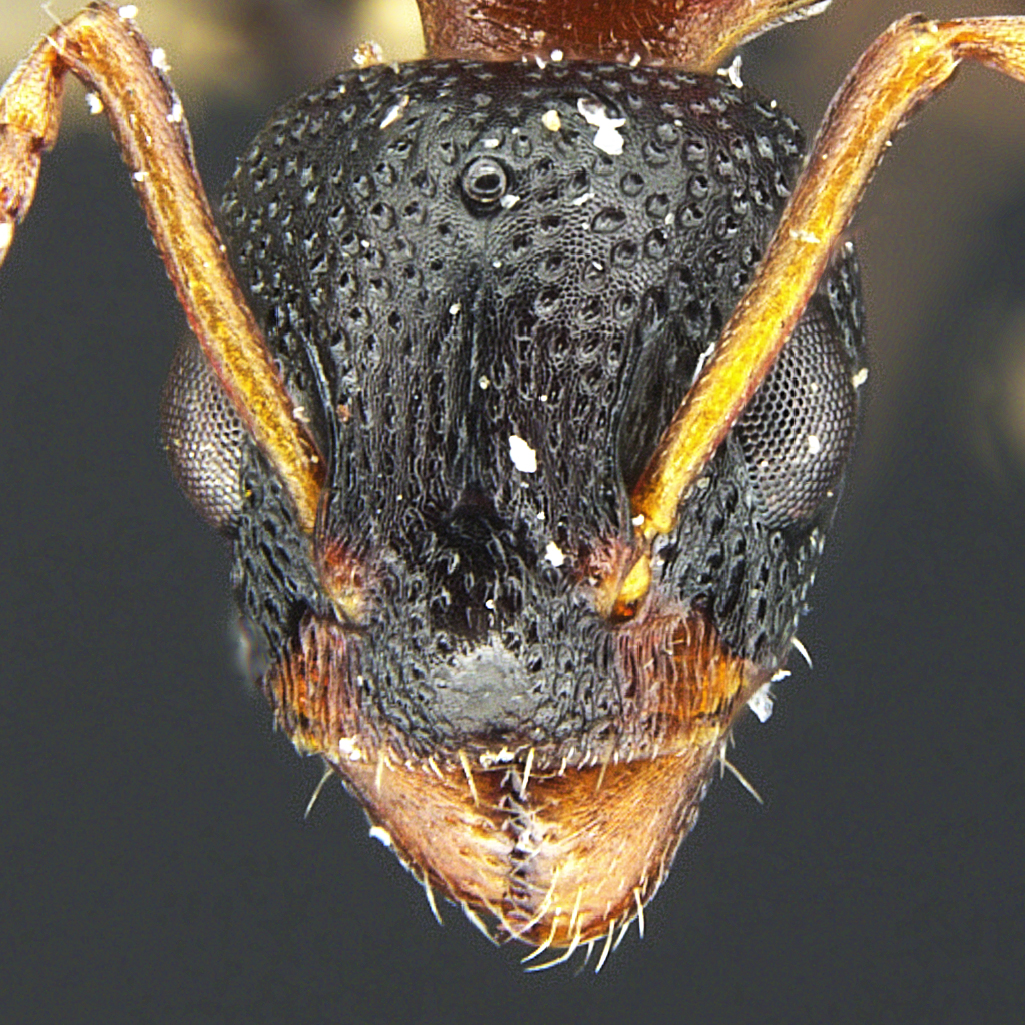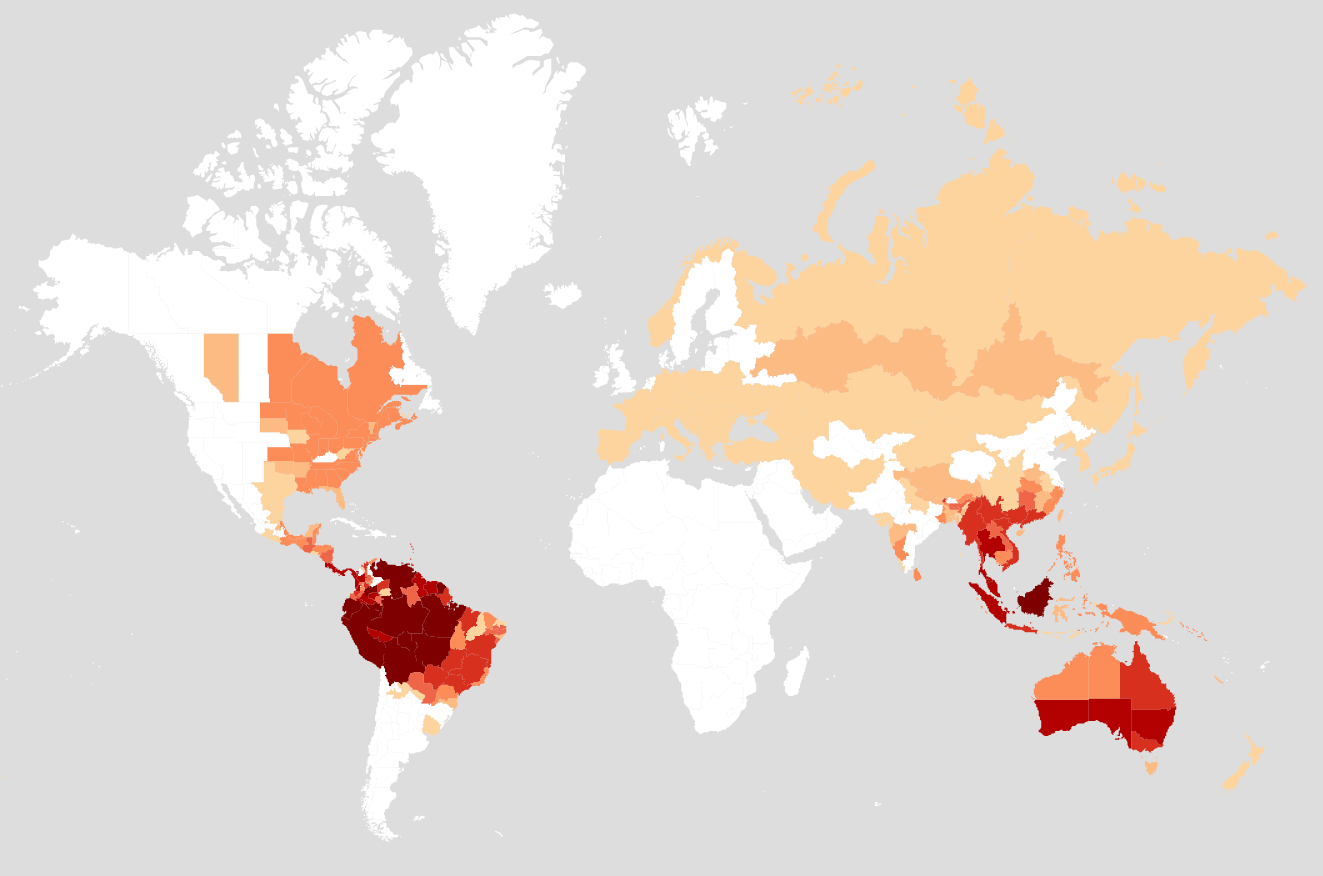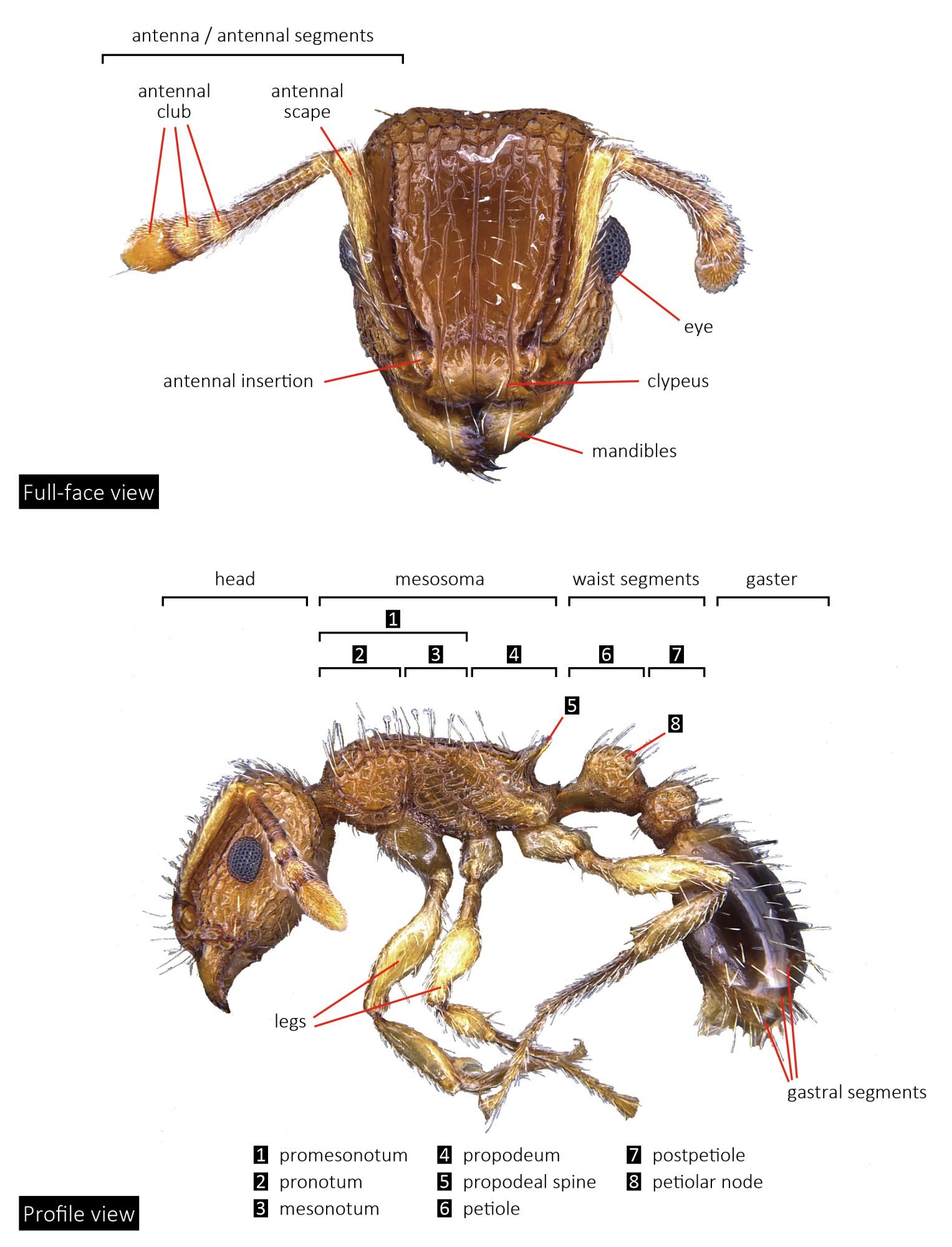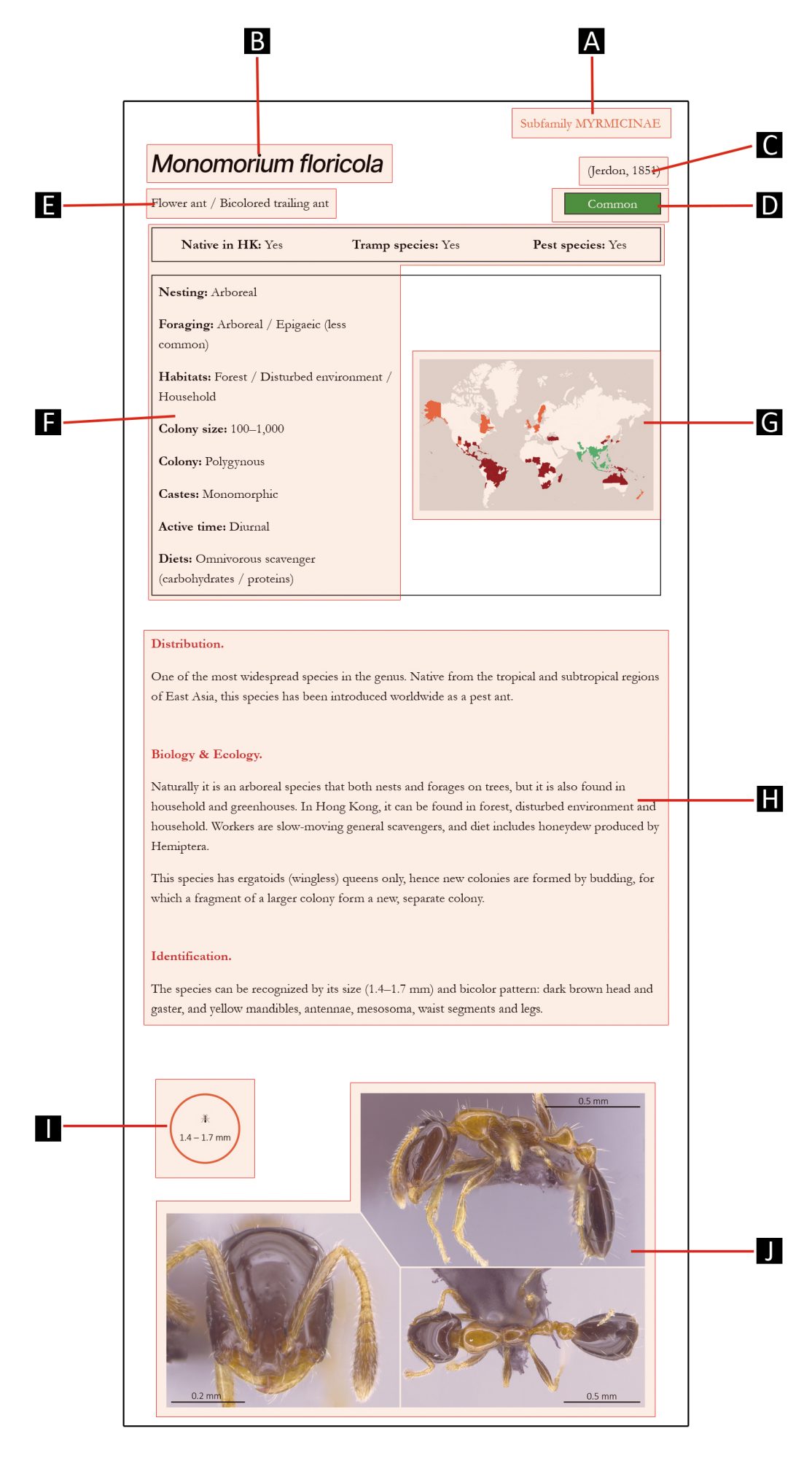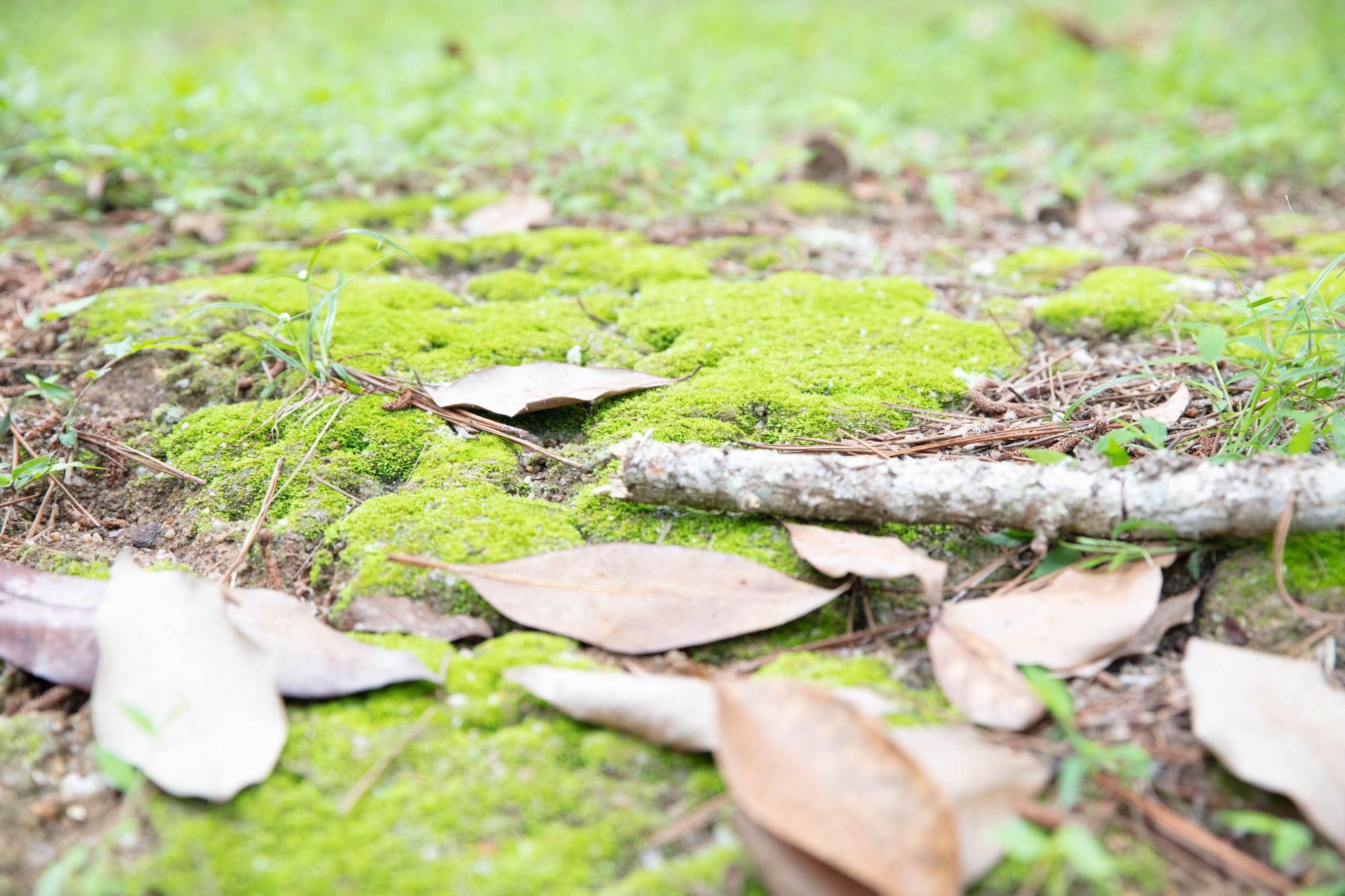
Subfamily DOLICHODERINAE
GENUS
Dolichoderus
Lund, 1831
Distribution.
A moderate-sized ant genus with 131 species described. The genus has a cosmopolitan distribution, with the notable exception of the African continent.
Biology & Ecology.
Dolichoderus species have diverse lifestyles and nest sizes. Some species build nests within the soil, while some are arboreal and build carton nests. Nest size ranges from a few dozen up to a thousand workers.
Dolichoderus species are mostly general scavengers. Workers’ foraging activity depends on the species’ lifestyle: those that nest within the soil forage above the ground, while those that are arboreal forage on trees. Some species form mutualistic relationship with aphids or scale insects, which they protect in exchange for honeydew.
Identification.
Dolichoderus species are small to medium in size (2–4 mm), typically with dark coloration, but some species are lighter in color. Spine(s) may be present or absent on the mesosoma. They can be recognized by a slit-like opening at the tip of gaster instead of a sting, a diagnostic character of the Dolichoderinae subfamily, and tooth-like flange on the underside of head near the base of mandibles.

Species in this genus
